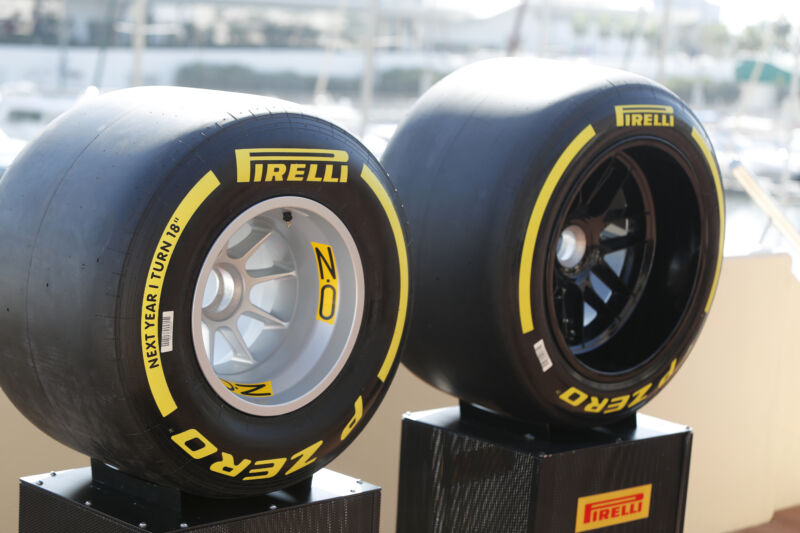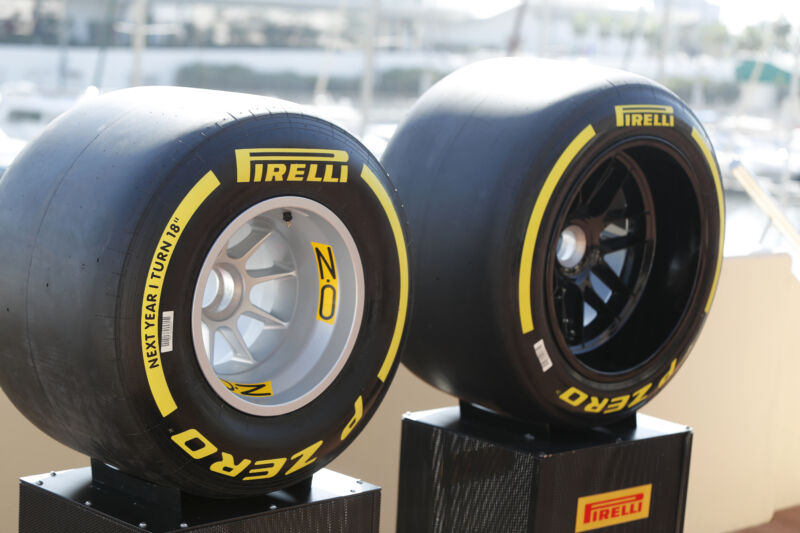
Enlarge / On the left, a 2021-spec 13-inch Formula One tire. To its right, a 2022-spec 18-inch F1 tire. (credit: Steven Tee / LAT Images)
Formula One goes to Abu Dhabi this weekend. When the checkered flag waves and the fireworks fire on Sunday night, it will finish a thrilling season, with either Lewis Hamilton or Max Verstappen emerging as this year’s champion.
But the Abu Dhabi Grand Prix doesn’t just mark the end of an exciting year’s racing—it also sees the end of an era as the sport prepares for a radical change to its tires. For decades, F1 cars have run on 13-inch wheels, wrapped in tires with high-profile sidewalls. But as part of 2022’s radical technical shakeup, the sport is now joining much of the rest of the racing world as it adopts 18-inch wheels and new, low-profile racing rubber.
There was quite a degree of freedom in wheel size and choice for F1’s first few decades, which might shock those accustomed to the current sport’s rigid and prescriptive rulebook. The move to standard 13-inch wheels happened in the 1980s, at a time when 13-inch wheels were still often fitted to road cars—albeit smaller, cheaper ones.





